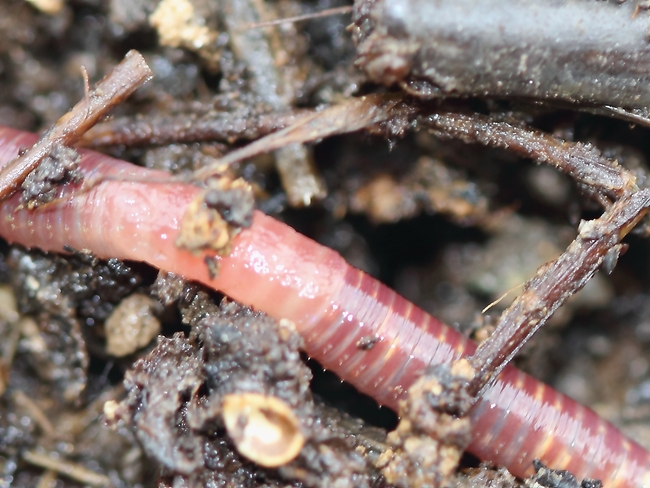
Posts Tagged: compost
What are white grubs?
You may be noticing white grubs in your compost piles, lawns, or garden beds. These white,...
EVENT :: Managing Weeds in Grasslands and Rangelands (online event)
Managing Weeds in Grasslands and Rangelands (online event) Tuesday, October 19, 20219:00 AM-12:00...
April Gardening Tips: Composting
As you practice social distancing during COVID-19, you may find yourself spending more time in the...
Turn food and garden waste into rich fertilizer with worms
UC Master Gardeners in Stanislaus County presented an all-natural, sustainable solution to disposing garden and food waste during a session for the community on worm composting, reported John Holland in the Modesto Bee.
All it takes is an 18-inch deep bin, equipped for drainage, and a supply of red worms. Provide the worms a substrate that contains a mix of high carbon materials - like shredded paper, dry leaves or sawdust - and kitchen scraps - such as fruit and vegetable cores and peels, leftover grains and coffee grounds. A few months later, the worms will have transformed the contents into a rich organic fertilizer ready to be applied to garden plants.
"It's a great fertilizer," said UC Master Gardener Dennis Lee. "It's very inexpensive for you to produce. You can do it indoors. There's very little odor - actually, no odor.
Learn more:
Orange County UC Master Gardeners created a video series on worm composting
Vermicomposting - Composting with Worms, from San Joaquin County Master Gardeners
Build the soil for successful gardening
Before digging in to spring planting, pay attention to building the soil, advises an article in the Los Angeles Times by Jeanette Marantos.
Marantos visited the Pasadena backyard garden of Yvonne Savio, the retired coordinator of the UC Master Gardener Program in Los Angeles County. Savio is the creator of the Gardening in LA blog, with new stories appearing "every other week or so."
“The old saying is, ‘Feed the soil, not the plant,'" Savio said. “When you just use chemical fertilizers, you're not establishing a long-lasting base of nutrition for the plant. It's just giving it a huge piece of cake on Sunday, and then by Thursday it's nutritionally starving.”
Savio recommends a steady diet of organic matter be spaded into soil, and a layer of organic mulch added to the top of soil.
When you continually add organic amendments to the soil, the dirt comes alive as the amendments decompose, creating the beneficial bacteria, fungi and the nutrients plants need to grow strong and healthy, Savio said. “It's really like a cafeteria where your plants can pick and choose what they really like.”


